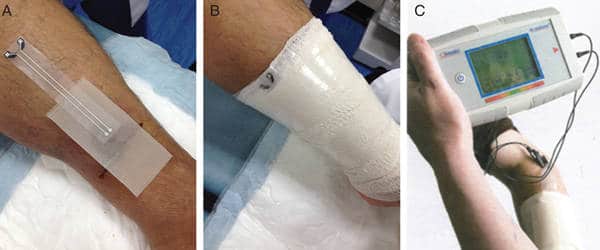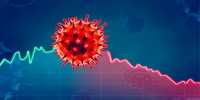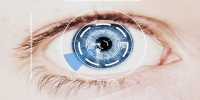Smart wound dressings with built-in nanosensors that glow to alert patients when a wound is not healing properly have been developed by researchers. The smart dressings, developed by a team of scientists and engineers at RMIT University, take advantage of magnesium hydroxide’s powerful antibacterial and antifungal properties. They are less expensive to make than silver-based dressings, but they are just as effective at fighting bacteria and fungi, with antimicrobial power lasting up to a week.
Dr. Vi Khanh Truong, project leader, stated that the development of cost-effective antimicrobial dressings with built-in healing sensors would be a significant advancement in wound care. “Currently, the only way to monitor the progress of wounds is to remove bandage dressings, which is both painful and risky because it allows pathogens to attack,” said Truong, a Vice-Postdoctoral Chancellor’s Fellow at RMIT.
New smart wound dressings have been developed that have built-in ‘healing’ sensors which glow when a wound is not healing properly. The multifunctional, antimicrobial dressings feature fluorescent sensors that glow brightly under UV light if the infection starts to set in and can be used to monitor healing progress.
Our smart dressings not only fight bacteria and reduce inflammation to promote healing, but they also have glowing sensors to track and monitor for infection. The ability to see if something is wrong would reduce the need for frequent dressing changes and help wounds to be better protected. “We hope that with additional research, our multifunctional dressings will be part of a new generation of low-cost, magnesium-based technologies for advanced wound care.”
Next-generation wound dressings
The global advanced wound dressing market is currently valued at $US6.9 billion and is expected to grow to $US9.9 billion by 2028, driven by technological advancements, an increase in surgical procedures, and an increase in the prevalence of chronic wounds and chronic diseases such as diabetes and cancer.
Despite the fact that magnesium is antimicrobial, anti-inflammatory, and biocompatible, there has been little practical research on how it could be used on medically relevant surfaces such as dressings and bandages.

The new study, published in ACS Applied Materials and Interfaces, is the first to develop fluorescent magnesium hydroxide nanosheets that can contour to the curves of bandage fibers, with lead author Dr. Adam Truskewycz (now at the University of Bergen, Norway).
The nanosheets, which are 10,000 to 100,000 times thinner than human hair, were created and embedded onto nanofibres by the research team. The magnesium hydroxide nanosheets respond to pH changes, making them ideal for use as healing sensors.
“The smart dressings we created not only fight bacteria and reduce inflammation to aid in healing, but they also have glowing sensors to track and monitor for infection. The ability to see if something is wrong would reduce the need for frequent dressing changes and help wounds to be better protected. We hope that with additional research, our multifunctional dressings will be part of a new generation of low-cost, magnesium-based technologies for advanced wound care.”
Healthy skin is slightly acidic by nature, whereas infected wounds are moderately alkaline. The nanosheets glow brightly in alkaline environments and fade in acidic environments when exposed to UV light, indicating the different pH levels that mark the stages of wound healing.
Because the nanosheets can be easily integrated onto any biocompatible nanofibre, they can be deposited onto standard cotton bandages. The magnesium hydroxide nanosheets were found to be non-toxic to human cells while killing emerging pathogens such as drug-resistant golden staph and Candida Auris in laboratory tests.
Scaleable and cost-effective
Truong stated that the process for creating the fluorescent nanosheets was simple enough to scale up for potential mass production. “Normally, antimicrobial wound dressings lose their effectiveness after a few days, but our research shows that these new dressings could last up to seven days,” he said.
“And, because magnesium is so abundant in comparison to silver, our advanced dressings could be up to 20 times less expensive.” The research team is eager to work with clinicians to advance the technology through pre-clinical and clinical trials.














